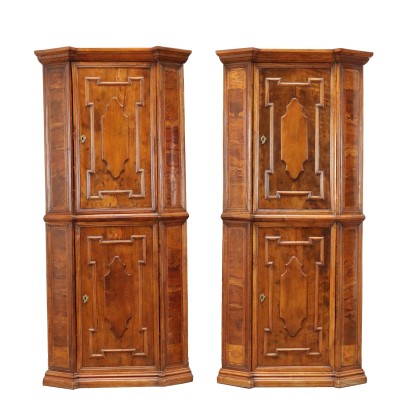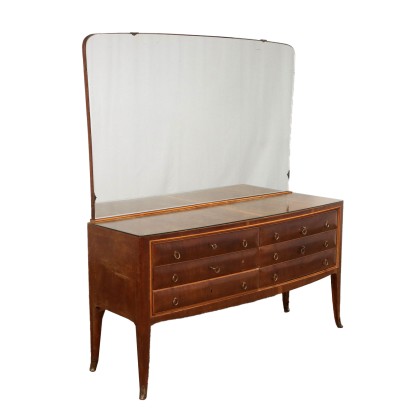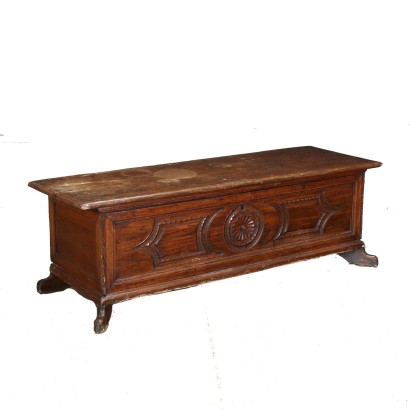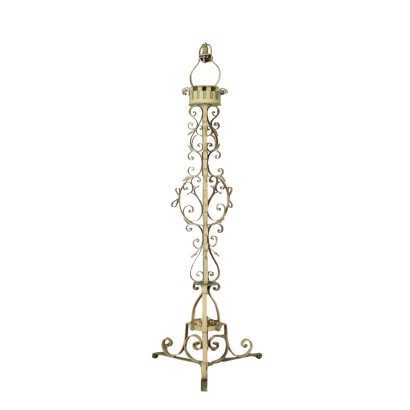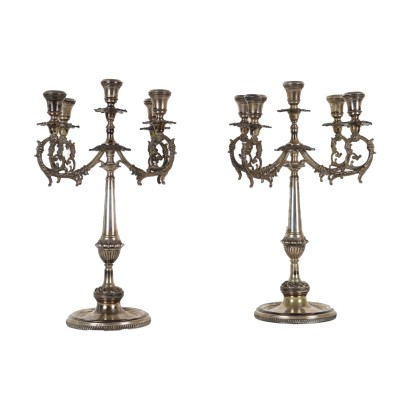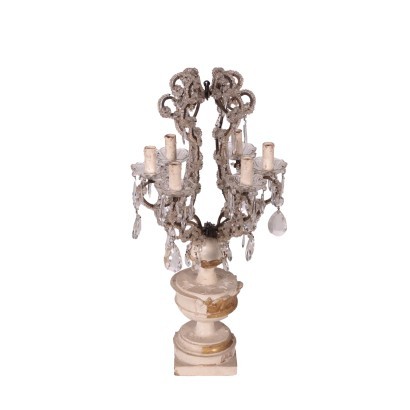Pair of Corner Cupboards Walnut Italy XX Century - Italy, early 20th century
Features
Italy, early 20th century
Age: 20th Century / 1901 - 2000
Origin: Italy
Main essence: Maple , Walnut , Olive
Material: Walnut Veneer , Olive Veneer
Description
Pair of walnut corner cabinets in Baroque style, built with ancient woods, Italy early 20th century. Double body structure with a pair of doors on the front, decorated with frames and a central panel; threaded uprights in maple and veneered in walnut and olive, molded tops and bases.
Product Condition:
Product that due to age and wear requires restoration and resumption of polishing.
Dimensions (cm):
Height: 179
Width: 83
Depth: 53,5
Additional Information
Age: 20th Century / 1901 - 2000
20th Century / 1901 - 2000 Main essence:
Maple
Hard, light wood used for inlays. It grows mainly in Austria, but it is widespread throughout the northern hemisphere, from Japan to North America, passing through China and Europe. It is one of the lightest woods ever, tending to white, it is similar to lime or birch wood. The briar is used in the production of ancient secretaires .
Walnut
Walnut wood comes from the plant whose botanical name is juglans regia , probably originally from the East but very common in Europe. Light or dark brown in color, it is a hard wood with a beautiful grain, widely used in antique furniture. It was the main essence in Italy throughout the Renaissance and later had a good diffusion in Europe, especially in England, until the advent of mahogany. It was used for solid wood furniture and sometimes carvings and inlays, its only big limitation is that it suffers a lot from woodworm. In France it was widely used more than anything else in the provinces. In the second half of the eighteenth century its use decreased significantly because mahogany and other exotic woods were preferred.
Olive
Extracted from the plant called olea europaea which lives in all the Mediterranean lands, it is a hard and compact wood. It has a characteristic light color, greenish yellow, with particular dark veins. It is widely used in cabinet making both as a solid wood for entire furniture, and for inlays, veneers and decorations. As it is very hard, it is also suitable for round work and for the manufacture of small objects. Material:
Walnut Veneer
Olive Veneer



